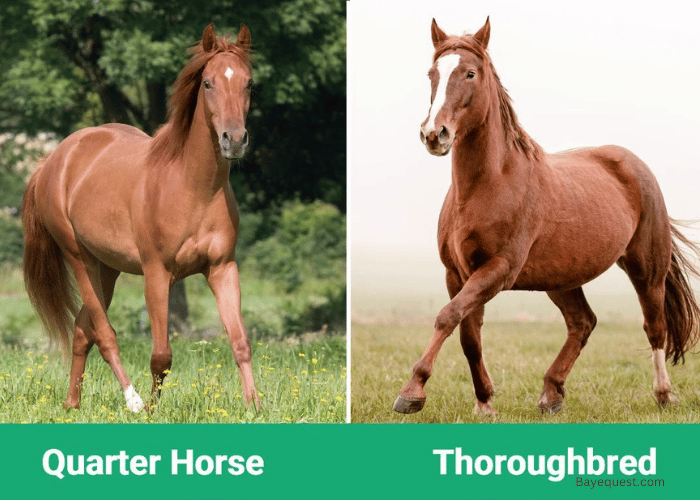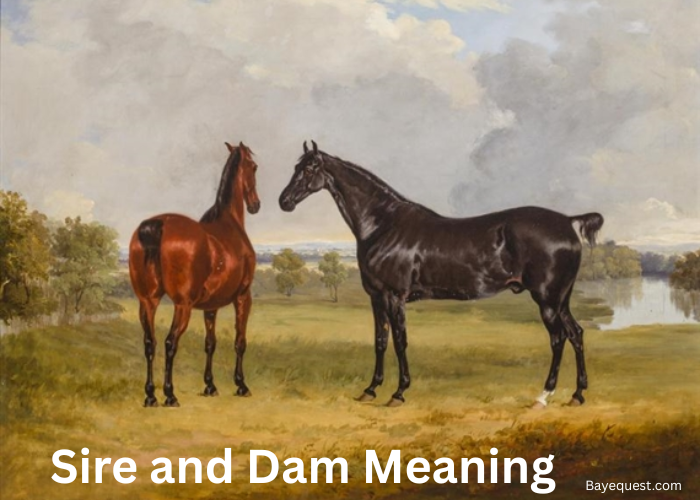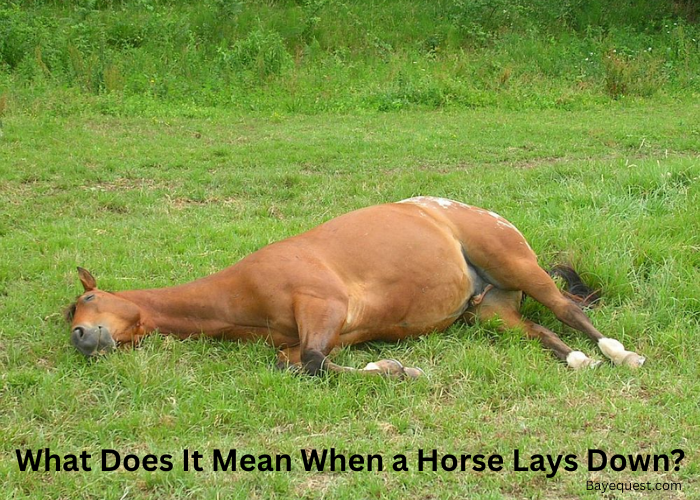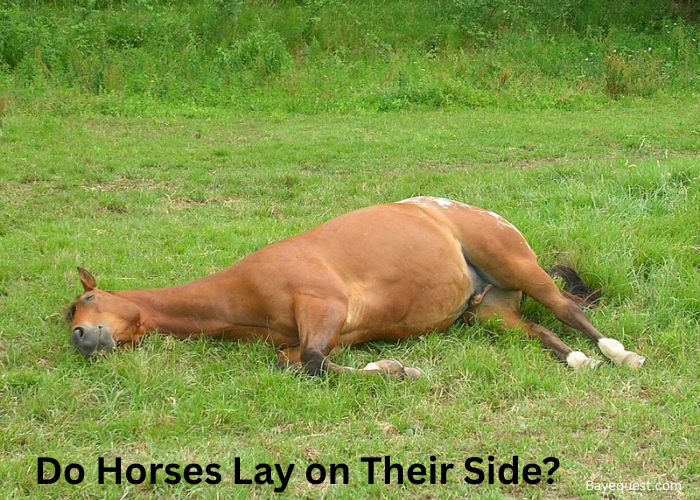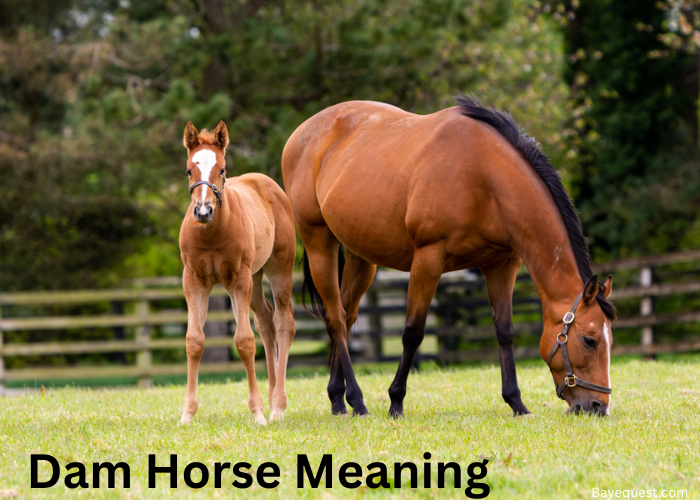The Thoroughbred and Quarter Horse are remarkable breeds, each excelling in its own way. But what truly sets them apart?
In this blog, we’ll explore their history, characteristics, and unique abilities.
By the end, you’ll discover what makes each breed special and which one might suit you best.
Ready to dive into the world of “Thoroughbred vs Quarter Horse”? Let’s hit the trail and begin.
What’s the Difference Between a Thoroughbred and a Quarter Horse? Key Takeaway
Thoroughbreds excel in speed and endurance, perfect for racing and jumping over longer distances, ranging from 4 1/2 furlongs to over a mile. Quarter Horses are sprinters, ideal for ranch work, rodeos, and short-distance races up to 870 yards, combining strength and versatility for various equestrian tasks.
Thoroughbred Overview
Thoroughbreds are sleek and fast. They are famous for their speed and endurance.
Originating in the 17th century, they were bred for racing. These horses have a lean body and long legs. They are built for speed.
Thoroughbreds are high-spirited. They are known for their energy and enthusiasm. This breed is ideal for experienced riders. They need proper training and handling.
Their main sport is horse racing. They dominate tracks worldwide. Besides racing, they excel in other events. You can see them in show jumping, dressage, and eventing.
Thoroughbreds require special care. They have delicate health. Regular vet check-ups are essential.
They need a balanced diet and good exercise. Their training should be consistent and patient.
Despite their challenges, Thoroughbreds are beloved. They have won many hearts and races.
Their history is rich with legendary horses. Names like Secretariat and Seabiscuit come to mind.
Thoroughbreds are not just fast but also intelligent. They form strong bonds with their handlers. They are willing to learn and eager to please.
Read also: What is the Price of a Thoroughbred Horse?
Quarter Horse Overview
Quarter Horses are strong and versatile. They have a muscular build and are quick bursts of speed.
This breed is perfect for short-distance races. They excel in sprints, especially the quarter-mile dash.
Quarter Horses originated in America. They were bred for ranch work and rodeo events.
Their history is tied to the American West, where cowboys relied on them for their strength and agility.
These horses have a calm and gentle temperament. They are easy to train and handle.
Quarter Horses are great for beginners and experienced riders alike. They are intelligent and willing to work.
Quarter Horses are incredibly versatile. They shine in various disciplines.
You’ll see them in western riding, barrel racing, and trail riding. They are also excellent for recreational riding and working on farms.
Caring for a Quarter Horse is straightforward. They are hardy and have fewer health issues compared to other breeds.
Regular grooming, a balanced diet, and proper exercise keep them in top shape.
Quarter Horses have a loyal following. They are one of the most popular breeds in the United States.
Their friendly nature and reliability make them a favorite among horse enthusiasts.
Read also: What is the Price of a Quarter Horse?
Quarter Horse Vs Thoroughbred: Side By Side Comparison
Curious about how the Quarter Horse and Thoroughbred stack up against each other?
This side-by-side comparison highlights their key differences, helping you understand what sets these iconic breeds apart.
Read on to see which horse fits your needs best:
American Quarter horse vs thoroughbred: History and origin
Thoroughbreds and Quarter Horses both have rich histories.
Thoroughbreds came from England in the 17th century. They were bred for speed and racing.
Quarter Horses have roots in colonial America. They were bred for ranch work and short sprints.
While Thoroughbreds became famous on racetracks, Quarter Horses became the stars of the American West. Both breeds were shaped by their environments and needs.
Thoroughbreds for endurance, Quarter Horses for strength and versatility. Their origins reflect their unique strengths and roles in the horse world.
Thoroughbred vs quarter horse: Physical appearance
Thoroughbreds and Quarter Horses look quite different.
Thoroughbreds are tall and lean, with long legs and a sleek body. They are built for speed and grace. Their heads are refined, giving them an elegant look.
Quarter Horses, on the other hand, are muscular and compact. They have a broad chest and powerful hindquarters.
This build makes them strong and agile. Their heads are broad and sturdy, reflecting their working roots.
Thoroughbreds are like marathon runners, built for long distances. Quarter Horses are sprinters, ready for quick, powerful bursts.
Both are beautiful, but in different ways. One is sleek and fast, while the other is strong and solid.
Thoroughbred horse vs quarter horse: Speed and agility
Thoroughbreds and Quarter Horses differ in speed and agility.
Thoroughbreds have an incredible speed over long distances. They can maintain a fast pace in races that span miles. Their agility is evident in sports like show jumping and eventing.
Quarter Horses, however, excel in short bursts of speed. They dominate in quarter-mile races, reaching top speeds quickly.
Their agility shines in rodeo events and quick maneuvers, like barrel racing.
While Thoroughbreds are built for sustained speed, Quarter Horses are all about powerful sprints and quick turns.
Both breeds are fast and agile, but each in their unique way.
Quarter horse versus thoroughbred: Temperament and personality
Thoroughbreds and Quarter Horses have distinct temperaments and personalities. Thoroughbreds are often high-spirited and energetic.
They can be sensitive and require experienced handling. Their spirited nature makes them exciting to ride but sometimes challenging.
Quarter Horses, in contrast, are calm and gentle. They are known for their easygoing and friendly personalities.
This makes them great for beginners and family use. They are intelligent and willing to work, making training easier.
While Thoroughbreds thrive on adrenaline and competition, Quarter Horses excel in versatility and steadiness.
Thoroughbreds vs quarter horses: Training
Training Thoroughbreds and Quarter Horses requires different approaches.
Thoroughbreds are high-energy and sensitive. They need a calm, patient trainer who can handle their spirited nature.
Consistency is key, with a focus on building trust and managing their energy. Their training often involves intensive workouts, especially for racing and jumping.
Quarter Horses, on the other hand, are more laid-back and versatile. They respond well to gentle, steady training methods.
Their calm temperament makes it easier to train for various activities, from ranch work to recreational riding. They adapt quickly and are willing learners.
While Thoroughbreds demand precision and patience, Quarter Horses thrive with a balanced, consistent approach.
Both require dedication but in different ways to bring out their best.
Quarter horses vs thoroughbreds: Performance and abilities
Thoroughbreds and Quarter Horses excel in different performance areas. Thoroughbreds are built for speed and endurance.
They shine in horse racing, often competing in long-distance events. Their agility also makes them stars in show jumping and eventing.
Quarter Horses, on the other hand, are powerhouses in short bursts. They dominate in sprint races, especially the quarter-mile.
Their strength and agility are perfect for rodeo events like barrel racing and cutting. They also excel in ranch work and western riding.
While Thoroughbreds are the marathon runners of the horse world, Quarter Horses are the sprinters and versatile workers.
Each breed brings unique abilities to the equestrian sports arena.
Thoroughbred and quarter horse: Lifespan
Thoroughbreds and Quarter Horses have different lifespans.
Thoroughbreds live between 25 to 28 years. Their high-energy lifestyles and racing careers can impact their longevity.
They often require more intensive care and regular vet visits to maintain their health.
The lifespan of Quarter Horses averages 25 to 35 years. Their calm nature and versatile use contribute to a longer, healthier life.
They tend to have fewer health issues and are known for their hardiness.
While both breeds can enjoy long lives with proper care, Quarter Horses usually outlive Thoroughbreds.
This difference in horse lifespan reflects their distinct lifestyles and care needs.
Quarter horse and thoroughbred: Health and care
Thoroughbreds and Quarter Horses have different health and care requirements.
Thoroughbreds are often prone to specific health issues due to their high-energy nature and racing careers.
They can suffer from leg injuries, respiratory problems, and digestive issues.
Regular vet check-ups, a balanced diet, and careful exercise management are crucial for maintaining their health.
Quarter Horses are hardier and have fewer health problems. They can still face issues like hoof conditions and muscular problems, but overall, they are easier to care for.
Regular grooming, proper nutrition, and routine vet visits keep them in good shape.
In summary, Thoroughbreds need more intensive health care.
Thoroughbred vs quarter horse: Purpose and usage
Thoroughbreds and Quarter Horses serve different purposes and uses.
Thoroughbreds are primarily bred for speed and endurance, making them ideal for horse racing.
They also excel in equestrian sports like show jumping, eventing, and dressage. Their agility and speed make them favorites in competitive arenas.
Quarter Horses, on the other hand, are versatile workhorses. They are perfect for ranch work, rodeo events, and western riding.
Their strength and quick bursts of speed make them excellent for cutting, reining, and barrel racing. They are also great for recreational riding and trail riding.
While Thoroughbreds are the stars of the racetrack, Quarter Horses are the all-around athletes of the horse world.
Each breed shines in its specific roles, catering to different equestrian needs.
Quarter Horse Vs Thoroughbred Checklist
This checklist compares quarter horses and thoroughbreds to help you understand the key differences and similarities.
| Feature | Quarter Horse | Thoroughbred |
| Origin | Colonial America | 17th century England |
| Physical build | Muscular, broad chest, powerful hindquarters | Lean, long legs, refined head |
| Speed | Best for short sprints, especially quarter-mile | Built for long-distance speed and endurance |
| Temperament | Calm, gentle, easy to handle | High-spirited, energetic, sensitive |
| Primary uses | Ranch work, rodeo events, western riding, trail riding | Horse racing, show jumping, eventing, dressage |
| Training | Responds well to gentle, steady training methods | Requires calm, patient, and consistent training |
| Health | Generally hardy, fewer health issues | Prone to leg injuries, respiratory problems, digestive issues |
| Lifespan | 25 to 35 years | 25 to 28 years |
| Care needs | Regular grooming, balanced diet, routine vet visits | Intensive care, regular vet check-ups, balanced diet |
| Agility | Excellent in quick maneuvers like barrel racing | Highly agile, excels in jumping and eventing |
| Popularity | Very popular in the U.S., especially in western disciplines | Famous worldwide, especially in racing |
Which One Should I Choose? Thoroughbred or Quarter Horse?
Choosing between a Thoroughbred and a Quarter Horse depends on your needs and preferences. Here’s a quick guide to help you decide:
Choose a Thoroughbred if:
You love speed and competition. Thoroughbreds are excellent for racing and high-energy sports.
You are an experienced rider. Their spirited nature suits those who can handle their energy.
You want a horse for jumping or dressage. They excel in show jumping, eventing, and dressage.
You can commit to intensive care. Thoroughbreds need regular vet check-ups and specialized care.
Choose a Quarter Horse if:
You need versatility. Quarter Horses are great for various activities like ranch work, rodeo events, and trail riding.
You prefer a calm temperament. They are gentle and easy to handle, making them great for beginners and families.
You want a hardy horse. They generally have fewer health issues and are easier to care for.
You enjoy short-distance speed. They excel in sprinting and quick maneuvers, perfect for barrel racing and cutting.
Final Thoughts
Think about what you plan to do with your horse. If you want speed and competition, a Thoroughbred is a good choice.
If you need a versatile, calm, and easy-to-care-for horse, a Quarter Horse might be the best fit.
Consider your riding experience, care commitment, and the activities you enjoy. Both breeds have their unique strengths and can bring great joy to the right owner.
FAQs
Do quarter horses have thoroughbred blood in them?
Yes, Quarter Horses have Thoroughbred blood in their lineage. This crossbreeding enhances their speed and agility, combining the best traits of both breeds.
Can a quarter horse beat a thoroughbred in a quarter-mile race?
Yes, a Quarter Horse can beat a Thoroughbred in a quarter-mile race. Quarter Horses are specifically bred for short-distance speed and can excel in these sprints.
What is faster, a quarter horse or a thoroughbred?
It depends on the distance. Quarter Horses are faster in short sprints, like a quarter-mile. Thoroughbreds are faster over longer distances, thanks to their endurance and stamina.
Conclusion
Ultimately, both Thoroughbreds and Quarter Horses are amazing in their ways.
Thoroughbreds bring speed and endurance, perfect for racing and jumping. Quarter Horses offer strength and versatility, ideal for ranch work and rodeo events.
Your choice depends on what you need and enjoy. Whether you prefer the thrill of racing or the reliability of a workhorse, there’s a perfect horse for you.
Both breeds have much to offer and will bring joy to any rider.




